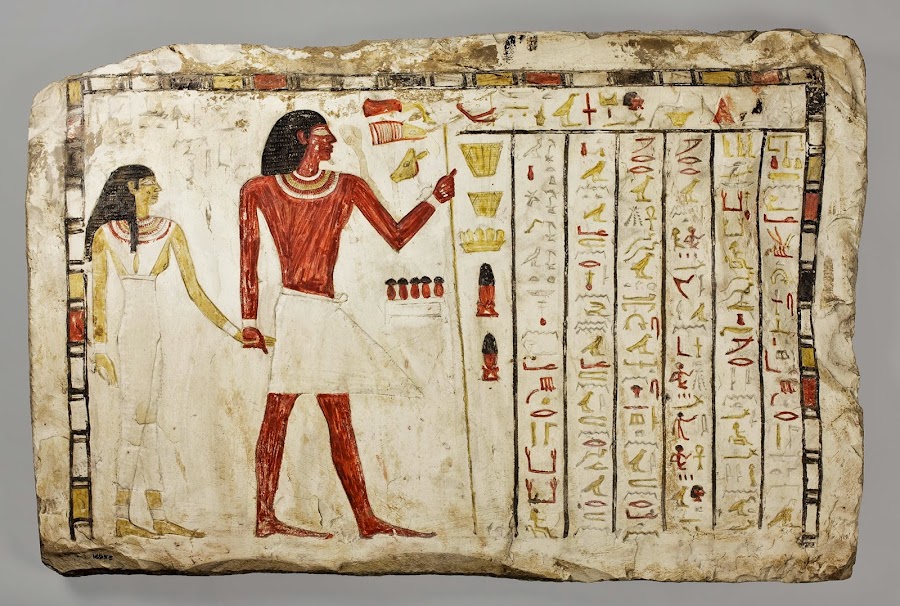All cultures throughout time have tried to honor and commemorate those they have lost. A new exhibit at the Oriental Institute Museum will show how the living cared for the dead, and how the ancients conceptualized the idea of the human soul in ancient Mesopotamia, Egypt and Israel/Palestine.

food for a deceased man and his wife. (Egypt, ca. 2219–1995 B.C. OIM E16955)
[Credit: Anna R. Ressman/Oriental Institute Museum]
The Oriental Institute’s Neubauer Expedition to Zincirli, Turkey in 2008, during which an inscribed funerary monument was discovered, inspired the exhibit. The monument, which dates to about 735 B.C, is carved with an image of a man named Katumuwa seated before a table heaped with offerings and with a lengthy inscription in Aramaic—a language widely used in the ancient Middle East. The text proved to be the longest-known memorial inscription of its type.

“The text gave us a whole new understanding of the ancient belief system in eastern Turkey and northern Syria. Although Katumuwa knew that the realm of the dead could be a cruel and lonely place, the rituals he describes that his family would enact on his behalf would give him a happy afterlife,” said exhibit curator Virginia R. Herrmann, PhD’11. Herrmann, now a visiting professor at Dartmouth College, was part of the team that discovered the stela and co-curated “In Remembrance of Me.”

at Zincirli, Turkey, shortly after its discovery in 2008 during an Oriental Institute
expedition [Credit: Eudora Struble/Oriental Institute Museum]
The text also revealed that the rituals took place not just at the grave or in the home, but in a private mortuary chapel next door to a temple—exactly the setting where the Katumuwa stela was discovered. The stela itself is in the Gaziantep Museum in eastern Turkey, but a precise facsimile of its front has been produced for the exhibit.

Rituals of remembrance
Other sections of the exhibit explore how commemoration and communication with the dead was enacted, the importance of banquet scenes, and how the concept of the soul differed in ancient Egypt, Iraq and Israel/Palestine.

(Luxor, Egypt, ca. 1327 B.C.) [Credit: Anna R. Ressman/Oriental Institute Museum]
Rituals of remembrance of lost loved ones—from memorial services to Day of the Dead celebrations in Latin America and even the “funeral selfie” phenomenon—continue to be an important aspect of many cultures.

ancestor cult. (Luxor, Egypt, ca. 1295–1069 B.C. OIM E14287)
[Credit: Anna R. Ressman/Oriental Institute Museum]
Jack Green, chief curator of the Oriental Institute Museum, said, “In coordinating this exhibit, we found that although death can often be a taboo topic in Western society, there are plenty of examples today that commemorate the dead through festive and colorful celebrations—the Dia de Muertos being just one example.”
Source: Oriental Institute of the University of Chicago [March 13, 2014]
















